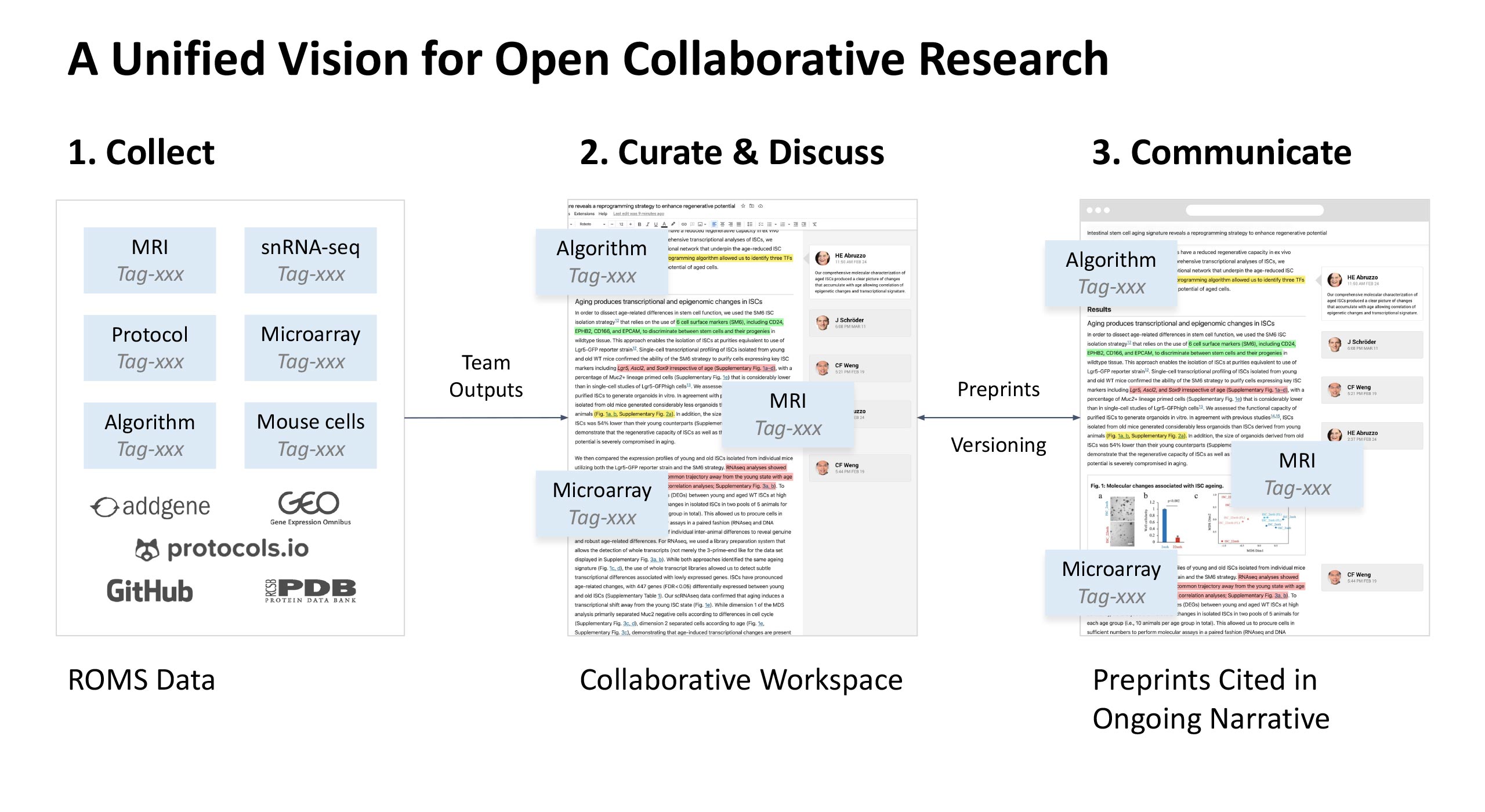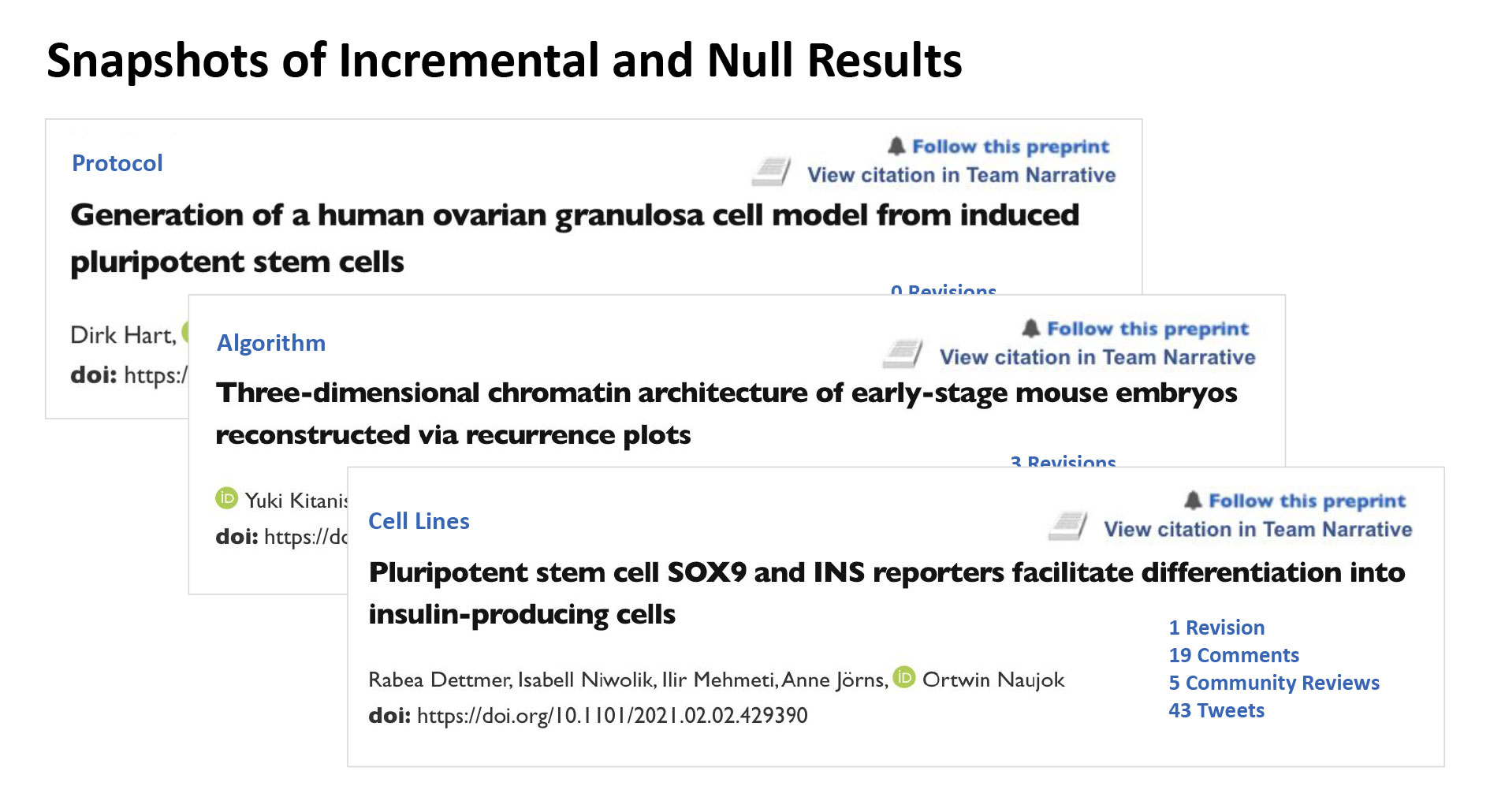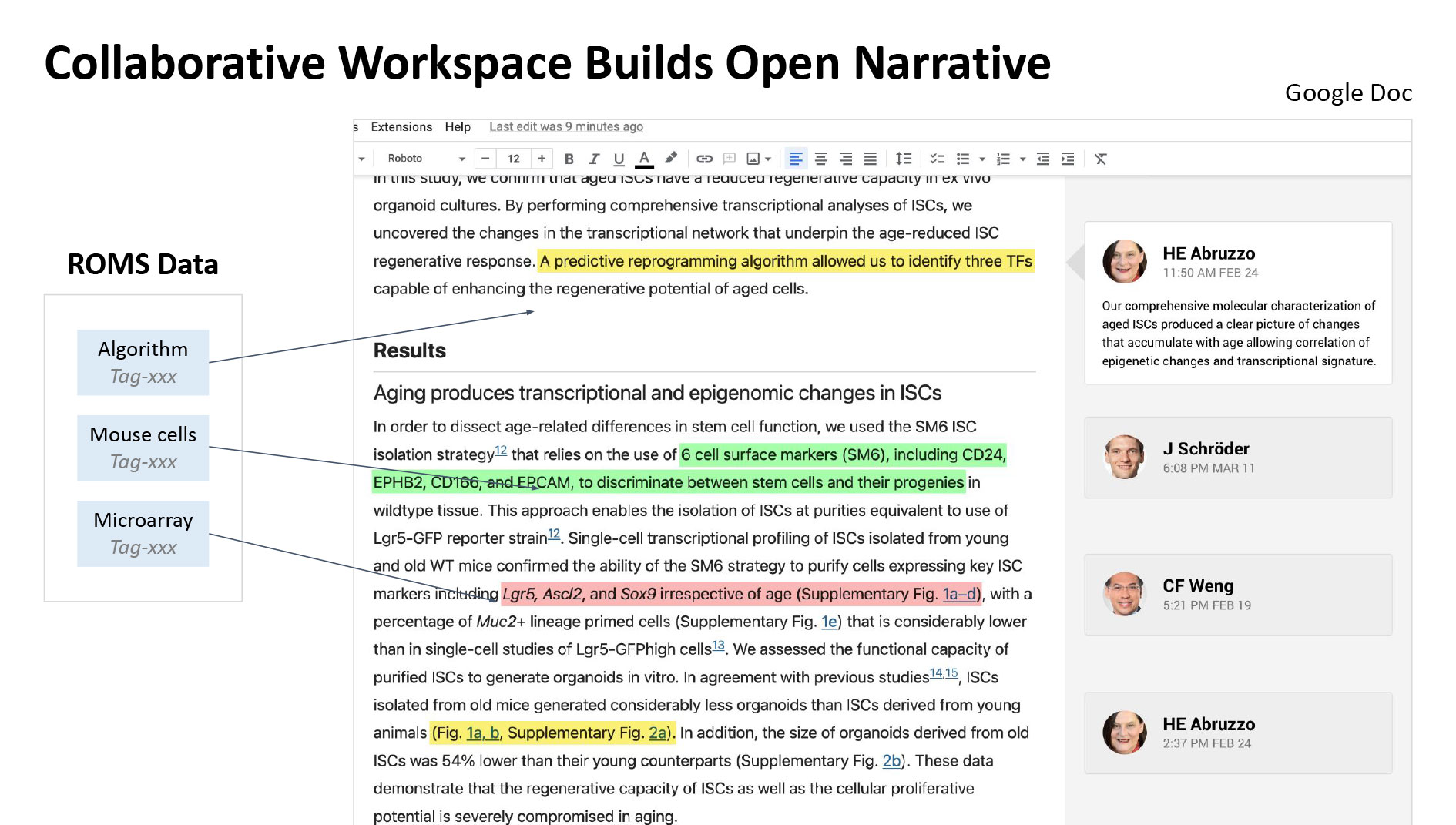Building a network of trust and interactivity by facilitating new modes of communication
- Tracking tools such as the Research Output Management System (ROMS) to identify, curate and tag incremental and null results (described here);
- Editorial facilitator (PhD-level subject expert) as team member to curate outputs, lead discussions, and communicate snapshots of the latest findings;
- Ongoing discussion among team members about their findings, how they relate to the field’s latest published evidence and recorded by a facilitator;
- Open narrative synthesizing and contextualizing the teams’ outcomes, posted in an open repository for feedback, and updateable as research progresses.
These are depicted in the following workflow:

Editorial Facilitator
The Editorial Facilitator is foundational in the workflow depicted above, forging collaboration and enabling a new credit system for all contributions. The EF is a peer of the project researchers, bringing both subject and editorial expertise to the project, serving team members in four beneficial ways:
1. Keep abreast of teams’ methods and findings, and encourage inter-team sharing and discussion to promote three pillars of sound science: replication, peer review, and data reuse.
2. Present and contextualize the project’s incremental findings as snapshots in a workspace document for commenting and tracking revisions (e.g., Google Docs).
3. Assist in posting early outputs with standardized to open access repositories to remove this burden from the researchers.

4. Synthesize and post a continually updated “Open Narrative”, citing team members’ incremental snapshots and enabling feedback from the community at large. The narrative evolves along with new findings and scrutiny from the community.
The Open Narrative Credits All Contributors
The working version of the Narrative serves as a “conference venue” on the closed platform, where team investigators come together to discuss snapshots of their findings as supporting or challenging the current understanding of the broader field. The document serves as a catalyst and instrument for team members to cite their emerging null and incremental results for open review.

Authorship of the Open Narrative, which reaches the wider community with updated snapshots signifying the initiative’s progress, is credited to the entire project cohort and the EF. Thus, investigators receive “publication” credentials along with tags that substantiate each team member’s contribution. Citations of individuals’ and teams’ results, including data, code and protocols, serve as additional credit. Updates to the Narrative are posted periodically based on new team findings, revisions, and discussions, as well as the wider community’s broader perspectives and feedback.
In summary, the Open Narrative is an organizing force whereby collaborators have a stake in the accuracy and interpretation of all project results, including those from other teams, and receive credit for communicating their work. In this scenario review, replication, and revision are crucial and routine operations. This collaborative approach will convey an even broader benefit to the community at large, by offering contextualized, innovative, well documented, organically peer reviewed, timely and reproducible findings.
